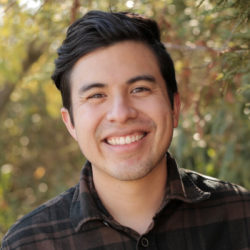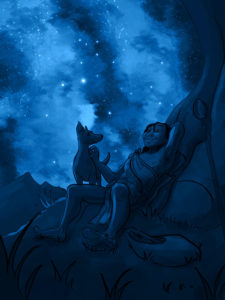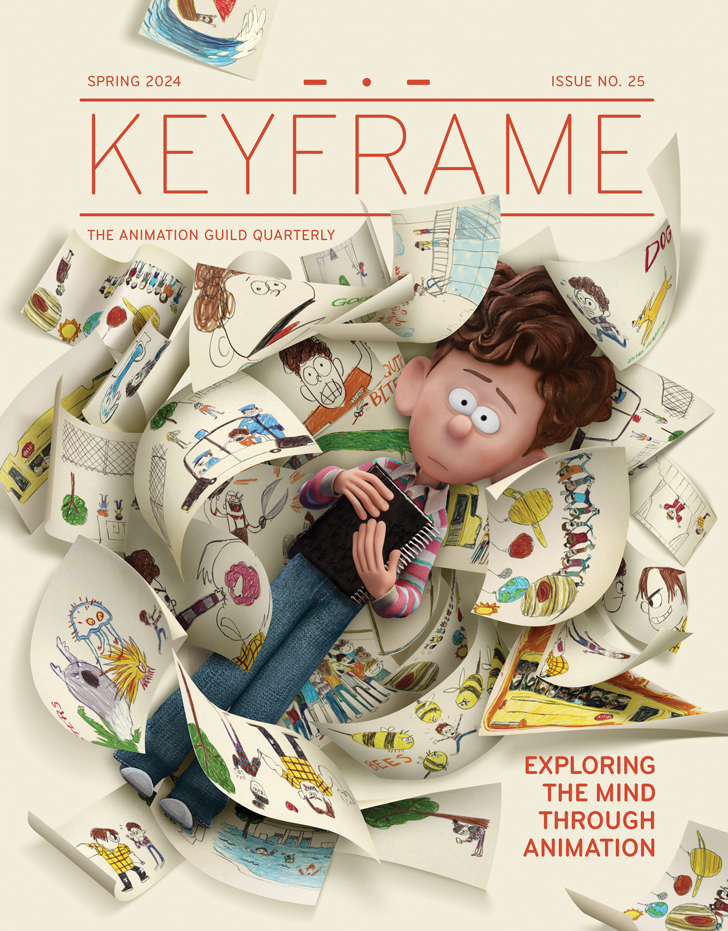
Tell us a little about yourself and your career.
I’m a storyboard artist based in Los Angeles. I was set on animation as a career when I was young, but my art college hopes didn’t quite pan out. I was fortunate to attend the USC School of Cinematic Arts in their live-action Film & Television Production program, where I learned about filmmaking from script through final sound mix. This led me to a career in post-production where I assisted with animatic editing—and this gave me the itch to seriously give animation storyboarding another try. I enrolled in classes at The American Animation Institute, and after a few years of working on my portfolio, I got my first Union gig as a revisionist! I feel incredibly grateful to have been working in storyboarding since.
Who are your inspirations in the field of animation?
My first animation education came from making-of featurettes on the DVD for Monsters, Inc. I’ve adored all of Pete Docter’s work since: His finished movies consistently are playful in tone and clearly made with a love for animation as a medium, but they also thematically speak to incredibly profound themes around living a wholehearted life. I hope to create such inspiring work someday.

Simultaneously, I grew up as a huge fan of Bill Melendez’s work on the Peanuts specials without any idea he was from Sonora, Mexico. I find myself returning to the slower, more introspective pace of those TV shows in my personal work. To know he was an incredibly influential filmmaker as a Mexican immigrant working in the States endears him to me even more.
What challenges have you faced in navigating a career in animation?
I love the work we do, but the process of getting your foot in the door with an animation job isn’t always transparent. My animation storyboard training happened largely outside of an academic setting, so I’m grateful to all of the kind-hearted working storyboard artists and directors who were gracious enough to offer me coaching as I honed my portfolio for professional work. It’s the sort of struggle I hope to help younger board artists with someday!

How has the animation industry helped give you representation, and how can it improve?
As a Mexican American artist born to Mexican immigrants, I haven’t yet seen too many stories where I felt fully represented as an audience member. If there were Latine characters in the movies and shows I watched growing up, they were usually relegated to a supporting character or a flat stereotype (or both). I’m thrilled that we’re in the midst of watching this change: Sofia Alexander’s Onyx Equinox is a thrilling adventure inspired directly by Mexican mythology, and Jorge R. Gutiérrez’s work with El Tigre and The Book of Life (I’m VERY excited for Maya and the Three) give Latine characters a lot of space to portray dimensional and fully-realized characters. The stories that we can tell provide an even bigger platform for nuanced representation between communities, and I feel like we’re just seeing the beginning of that movement. Let’s see more of it!

What words of wisdom would you give to people in your community who would like to get into animation?
Our stories are important! And telling them is of equal importance. As I get older, I have more and more appreciation for the influence that storytelling, especially in animation, has on our collective culture. The Latine community is far from a monolith, and although it’s a huge cultural force, it’s not widely appreciated for its nuance. I hope young Latine artists see the value and importance of putting their stories out into the world, animation or otherwise.
What do you hope to accomplish as an artist in the animation industry?
Though I’ve been working in entertainment for a while, I’m fairly new to working in animation. My short-term goal is to learn as much as I can, both in the craft of storyboarding and also how to be a helpful part of a larger team. I think I’ve thrived under leaders who create an environment where individuals feel supported and recognized for their contributions. I’d really love to be able to create that for others in the future.
What does being in the Union mean to you?
To be in a union is to participate in a larger tradition of organizing. In our case, it means the artist taking more ownership of a work than simply executing orders. There’s so much value in sharing our experiences with each other as artists and workers—it makes us all better! I’m grateful and proud to be part of ours.
Check out more of Bravo’s work at his website.
Follow him on Twitter at @JuanLuisBravo_ and on Instagram at @juanluisbravo_.







.png)